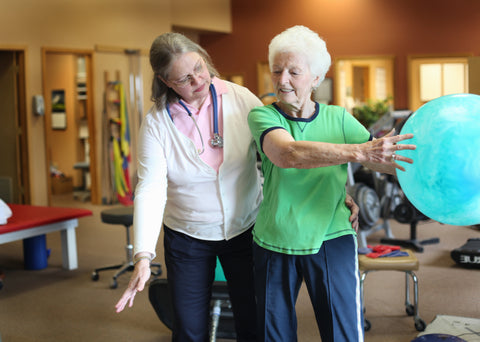The importance of bone health
Detecting bone degeneration in elders

By Catherine Todd/for Montana Health Journal
Bone changes are obvious when children grow, and obvious when you see the new bone at a fracture site on an x-ray.
It is also obvious something has changed when you see an older person who is stooped over. What is not obvious is the process of bone degeneration, since we don’t see anything happen. It’s slower and less noticeable than when our hair or fingernails grow and need to be cut.
Our body is continually making new bone and absorbing old bone. When we are younger, the process favors bone development. This is when bone density increases, with peak bone mass occurring between age 25 and 35. The process slowly changes after that so more bone is lost than is made. Most women begin losing bone after age 35, but the rate of bone loss increases rapidly at menopause. In fact, up to 20 percent of a women’s lifetime bone loss can occur in the first five to seven years after menopause.
Good nutrition, especially calcium and vitamin D, is important for bone production. Children and teens also need exercise, particularly jumping and running, active games and sports. These transmit forces through the muscles and bones that help stimulate bone growth and strength.
Osteoporosis is a significant loss of bone density, usually measured with a specific test — a dual energy x-ray absorptiometry (DEXA). Because bone growth and loss happens slowly over time, there is no awareness of this condition, and it is considered a silent disease. Some women will become aware of their poor bone health when they have a bone scan completed during menopause on a screening basis; or they may have a fracture and discover the underlying problem at that time.
North Valley Hospital offers a semi-annual course on bone health at the Physical Therapy Outpatient Clinic in Columbia Falls. Sara Ehlert, physical therapist, coordinates the course, which includes information on good nutrition and exercise for bone health.
“Offering women the opportunity to learn more about how to take care of themselves is empowering,” she says. “Participants get detailed answers to their questions and a chance to try some recipes and learn basic exercises.”
Registered dietitian Carrie Archibald speaks on good nutrition and Darlene Bestwick, PharmD, provides information on osteoporosis medications and supplements. Stacy Dolan, physical therapist, helps with the exercise portion and provides personalized attention during the exercise portion of the course.
Besides doing weight-bearing exercises, it is important for women to include postural and balance exercises in their daily routines.
Proper attention to exercise, nutrition and in some cases, medications to modify bone loss or help with bone growth, can lead to a change in the right direction.




Leave a comment